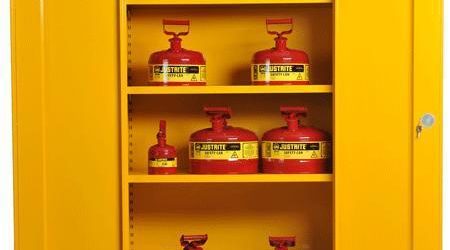Purchasing guide: Choosing the right waste sorting bin for your company
We often pay little attention to it and yet it is always at hand: under the desk, next to the coffee machine, in the toilet or even outside, near the building entrance or next to the picnic table. The waste bin can be adapted to any number of uses: Manutan offers over 4,000 products and solutions! Recycling bins, outdoor bins, green bins, office bins… Find out how to choose your corporate recycling bin and encourage your employees to recycle.
Before installing a waste sorting bin in your company, prepare the ground
The implementation of selective sorting must be conceived as a real corporate vision carried out by your teams. It is not only about providing for the installation of containers, the organisation, and methods of collection, but also about day-to-day management and staff awareness.
Encourage your staff to sort on a daily basis
You can provide as many waste separation bins as you like, but if your employees don’t know how to separate glass from plastic or other materials, everything is likely to end up in the wastepaper basket!
Take your time to explain the sorting process by:
- A visit to a recycling centre as a team;
- Seminar on environmental protection awareness;
- ‘Recycling’ workshop with a waste facilitator;
- Best sorter competition;
- Educational posters showing product examples and their destination bins;
Also take the time to involve your teams in the project’s management (possible solutions, placement of containers, etc.) so that sorting becomes a reflex for everyone and not a constraint.
To find out how you can make your business more sustainable, check out our purchasing guide to new eco-friendly products for your office and warehouse.
Implementing selective sorting in the company: questions to ask yourself beforehand
Before choosing your sorting bins, you must first assess your needs, even for 3 indoor sorting bins.
Ask yourself the right questions:
- How many employees will use them?
- What are the expected rubbish volumes?
- For which types of waste (glass, paper, plastic, food or other)?
- What are your selective sorting and recycling obligations?
- How are your cleaning and waste collection providers organised?
- Is there already a waste management approach in the company (colour codes, unity between sites, etc.)?
Sorting bins in companies: which format should you choose?
In many cases, your choice will be guided by practical on-site considerations, particularly regarding the shape of your waste bin.
For example, a daily emptied office waste bin should fit easily under the desk or even under the drawer unit and therefore not exceed a few dozen centimetres in height.
Conversely, a kitchen waste bin, which is used extensively in the company restaurant, can be higher, both to prevent splashes and to reduce the required floor space (for the same volume). It can also be fitted with a roller base for easier cleaning of the floor.
It is up to you to find the ideal ‘form factor’ for your daily management by mixing capacity, dimensions, general shape (round, rectangular…) and accessories.
A robust sorting bin, but above all one that is adapted to its environment
Obviously, everyone is looking for a durable waste sorting bin!
It is therefore logical to choose the most solid solutions. This choice is highly dependent on its use and location: it is impossible to place one material on top of another.
Plastic or steel? Without going into the details of the different types of plastic remember that these are generally more resistant to impact than steel, which makes it the ideal solution for an aggressive environment (e.g. a workshop). However, they are not well suited to sun exposure (except for outdoor models that have been specially treated against UV rays) and the cold, which makes the material brittle.
Steel will retain its properties better outdoors, provided it is protected against rust.
Many hybrid alternatives can be considered for certain applications: for example, for an outdoor waste bin, a wooden shell (strong, durable, and aesthetically pleasing) enclosing a ‘basic’ (plastic or metal) bin, which is itself lined with waste bags. It is also possible to make a simple plastic bin last for several years by ‘hiding’ it inside a trash cabinet (like Totem bins in fast food restaurants).
Moral: a durable sorting bin is above all one that is adapted to its environment.
Criteria for choosing a company waste sorting bin
Finding the right waste sorting bin for your business is a personal choice, involving technical, economic, operational, and sometimes even aesthetic considerations. Nevertheless, let’s try to draw up a checklist of the different criteria to be taken into account:
- Capacity, volume: depending on the number of users and the frequency of waste collection.
- Dimensions, footprint: depending on the available space.
- Material: depending on the location (indoor or outdoor sorting bin, workshop, office bin, etc.).
- Colour: depending on the sorting policy.
- Design: will the sorting bin be visible? By whom?
- Installation: heavy bin or fixed to the ground to limit theft (especially outdoors), hung on the wall or on a post to facilitate cleaning.
- With or without bin bags.
- Security: fire protection, simple transparent bin bag holder to comply with the Vigipirate plan.
- Applicable standards: fire protection, HACCP[1]…
There are also other elements to consider:
- Quality control: transparency to estimate the filling or to check the quality of the selective sorting.
- CSR: how does a waste sorting bin contribute to your company’s environmental approach? For example, some bins are made of cardboard or (partially) recycled plastic.
- Operations: the way sorting bins are handled during waste collection can have an impact on their attributes (handles, wheels, possibility of hanging them together, stacking them, etc.).
- Accessories: do we need to add wheels, lids with specific slots for certain types of waste (cups, paper, etc.), handles?
- Special needs: don’t forget hazardous products, battery collectors, ashtrays…
- Price: depending on the budget you defined beforehand to implement recycling solutions.
Accessories
In addition to the bin bag, which is more than just an accessory, there are many other options that can improve the performance of your company’s waste sorting bin:
- Casters: directly integrated into the sorting bin or in the form of a rolling tray. They facilitate the transport and handling of waste bins during waste collection.
- Supports: most often specific to a model, they allow it to be hung up to facilitate its use, its collection and the cleaning of the premises (the bin being held high). It is the ideal solution for a photocopier, a coffee machine or a workbench.
- Special openings: these lids have a so-called ’slot’, a cut-out adapted to the waste to be collected (batteries, coffee capsules, cans, cups, paper, etc.) or a funnel shape to make life easier for clumsy people!
- Anti-odour kits: you may add capsules, perfume diffusers or filters (activated carbon).
- Slow-closing lids: they save time when disposing of waste, but above all, they reduce the noise of lid closing to a whisper, which avoids bothering employees near the collection point.
- Lid locks and fasteners: to prevent theft of bin items located in public or unsupervised areas or to restrict their use (depending on the occupancy of the premises, for example, or in the context of anti-terrorist regulations).
- Interchangeable and coloured lids: for even more flexible and customisable bins.
Companies often overlook the choice of the right waste sorting bin. Well planned and implemented waste management is a key aspect of any effective CSR policy.






